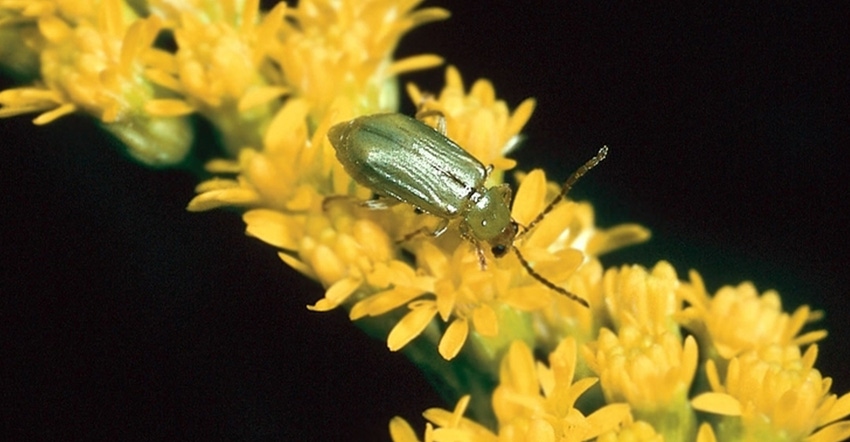July 2, 2019

With the discovery in North Dakota of the first northern corn rootworms in the U.S. that are resistant to some Bt-proteins, scouting for the adult beetles this summer is important, says Janet Knodel, North Dakota State University Extension entomologist.
The presence of a large number of adult rootworm beetles may indicate the population has developed some resistance to the Bt proteins in planted corn hybrids. Additional steps may have to be taken to control the insects this year and in the future.
In the Dakotas, northern and western corn rootworm beetles usually emerge in August. Northern corn rootworm beetles are lime or pale green in color and are about 1/5th of an inch long. Western corn rootworm beetles are yellow to green with three longitudinal stripes or a black patch on their backs. They are about the same size as the northern corn rootworm beetles.
Rootworm beetles feed by scraping leaf tissues, clipping silks and chewing on the pollen of corn. Damaged leaves have scars that look like somebody scratched the surface of the leaf tissue. Sometimes, the beetles create holes in the leaves or total strip the leaves.
Occasionally, large numbers of beetles congregate and feed on corn ear silks during early pollen shed. If silks are chewed back to the tips of ears (less than 1/2 inch of silks protruding) during the period of maximum pollen shed, poor pollination and grain set can occur. However, it isn’t common in North Dakota corn fields to have significant feeding injury by rootworm beetles, Knodel says.
Treat fields with a foliar insecticide when you find an average of five or more beetles per ear mass, when silks are being clipped to within 1/2 inch of the ear tip and when pollination is less than 50% complete, Knodel advises.
After pollination is complete, silk feeding by rootworms will not impact corn yields.
Source: NDSU Extension, which is solely responsible for the information provided and is wholly owned by the source. Informa Business Media and all its subsidiaries are not responsible for any of the content contained in this information asset.
You May Also Like




